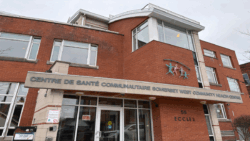Tuesday morning Ontario Premier Doug Ford declared a state of emergency because of the COVID-19 pandemic. Effective immediately, bars and restaurants, public libraries, daycares, private schools and more public services will close until at least March 31.
Ottawa Public Health is now asking Ottawa residents to practice social distancing. What’s that?
How can you practice social distancing?
Social distancing is taking personal steps in your life to limit the number of people with whome you may usually come into contact. The following are recommendations by Ottawa Public Health (OPH) and Public Health Ontario.
- Avoid non-essential trips into the community.
- Cancel in-person meetings or gatherings and hosting them virtually instead if possible.
- Work from home where possible.
- Maintain a three to six foot distance from each other when in the community.
- Avoid visits to care settings for seniors or hospice individuals unless emergency circumstances make it essential.
- Keep away from seniors and people with chronic medical conditions.
- Keep windows down in ride-share trips in a taxi or with Uber.
- Limit the number of visitors in your home.
- Monitor all symptoms and contact your local public health unit and health care provider for instructions on how to proceed. If symptoms escalate, visit the COVID-19 assessment centre.*
- Call Telehealth (1-866-797-0000) if you have questions or start to feel worse.
- Start self-isolation if symptoms begin or worsen, however go to the hospital if they become severe.
What is self-isolation?
It is recommended to self-isolate for 14 days if you are returning from anywhere outside of Canada. If you develop respiratory symptoms (fever, cough, or shortness of breath) or come into contact with someone who is either diagnosed or being tested for COVID-19. Below are tips on self isolation from Public Health Ontario.
- Stay home.
- Monitor your symptoms for 14 days.
- Separate yourself from all other household members as much as possible.
- Wash your hands often and dry with disposable paper towel or a cloth that is not shared by household members.
- Wear gloves and a mask where possible.
- Dispose of all gloves and masks after use.
- Cover all coughs and sneezes with your elbow or tissue and wash your hands after touching contaminated tissue.
- Frequently clean areas of your home that are “high-touch” surfaces like doorknobs or remotes with gloves. Ottawa Public Health recommends using “a diluted bleach solution (2 teaspoons of bleach to 4 cups of water) or household disinfectant”.
- If symptoms become severe go to the hospital and adhere to all posted signage.*
*Ottawa Public Health is asking people to consider the following before calling OPH or seeking medical care. The priority of healthcare will be to test people who need it most. Tests will not be administered to individuals who do not show signs of respiratory symptoms. If your symptoms are mild, please self isolate until 24 hours after all symptoms have fully resolved.
“Most people with mild symptoms will recover on their own at home,” Ottawa Public Health says.
Flattening the curve
Public health officials and politicians are frequently referring to flattening the curve of infection. The “curve” is an epidemic curve and is used by scientists and health officials to track the number of cases reported each day during an epidemic. The curve starts out small, reaches a peak and levels off as the epidemic dissipates. The point of social distancing and other measures is to slow the rise of the number of cases so the health care system isn’t overwhelmed.
Risk level and precautions according to the Ontario Ministry of Health
- If you are an individual being tested for COVID-19? Self isolate until cleared by local public health unit
- Returning travellers are advised to self-isolate for 14 days. If symptoms develop, contact your local public health unit.
- Have you had known close contact with a case? Self isolate for 14 days from last known exposure. If symptoms develop, contact your local public health unit.
- Returning from an affected area? Self-monitor for symptoms for 14 days from last known exposure. If symptoms develop, self-isolate immediately and contact your local public health unit.
- No known contact with a case? Continue with regular good hygiene practices and practice social distancing.
Making social distancing and self-isolation a little better
Being stuck inside doesn’t have to be all hand-washing and no fun. As long as you’re practicing safe hygiene, there are still lots of things you can do for 14 days.
- Learn a new skill! It’s never too late to learn how to knit or paint with Bob Ross, and with access to the internet it’s never been easier to learn something new.
- Start a big project like that novel or screenplay.
- Workout at home. There are lots of YouTubers who offer free at home workouts.
- Start some spring cleaning, open all your windows and get the fresh air flowing.
- Break out a board game or find an app that will let you play with friends online like Scrabble or Uno!
- Explore a museum or art gallery from the comfort of your own home.
- Catch up on all your favourite streaming network shows and movies, now’s the time!
- Read a new book or start listening to a podcast.
- Subscribe to the Capital Current YouTube channel and check out whats been going on in Ottawa this year.
Mental health resources
Social isolation and distancing can be mentally difficult for many people. Know that there are many resources for you if you’re feeling alone.
Distress Centre of Ottawa: dcottawa.on.ca or call 613-238-3311
Distress Centre Ontario: dcontario.org or call 416-486-2242
Mental Health Crisis Line: crisisline.ca or call 613-722-6914
E-Counselling: thecounsellinggroup.com/e-counselling
Crisis Services Canada: crisisservicescanada.ca or call 1-833-456-4566 or text 45645




